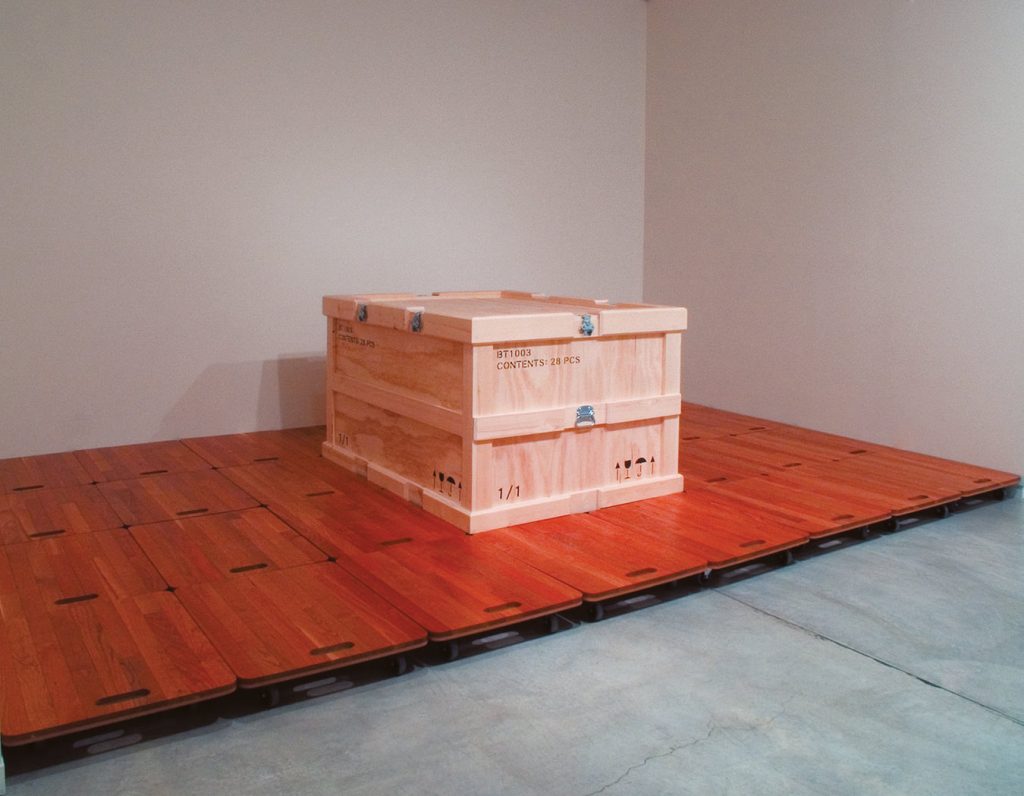It is widely known that trompe l’oeil, which means “a trick of the eye” in French, is an art technique that uses realistic imagery to create optical illusions. Although the process was most extensively used in the Baroque period, it actually dates back much further, and has also been adapted in modern times. Today, trompe l’oeil is a common practice used in movies (recall the now famous “running up the wall” scene in the 1952 film Singin’ in the Rain), on public murals, in advertising, and of course, in contemporary art—notably that of Vancouver artist Brandon Thiessen.
Many of Thiessen’s recent works focus on the idea that nothing should be accepted as it appears. As Thiessen puts it, “there are a lot of things that people look at that should be challenging, but instead they’re just taken for what they are. They don’t spend the time to dig deeper.” With that said, Thiessen likes to challenge general public perceptions about art.
Among Thiessen’s most memorable exhibitions was “Power Take-Off”. Comprising a large green wooden ramp and straw bales with a bull’s eye target, the exhibition challenged the notions of Vancouver’s photo-conceptual art populace. “I think with my work I’m still trying to do reactionary pieces that cause people to rethink why they consider photographs important, and why this Vancouver school of photography is as relevant as it is,” Thiessen says. The straw bales that laid behind the ramp were positioned to confront the viewer on this notion. Although they were real bales, they were cloaked and covered by vinyl photographs of the straw laying beneath.
Similarly, the exhibition also included a jerry can covered by a knitted cozy, a photograph of a puddle on the floor, and a framed photograph of a fire extinguisher behind a frame of break-in-case-of-emergency glass—all of it leaving the viewer to wonder where reality ends and optical illusion begins.
“Power Take-Off” was a marriage of Thiessen’s interests as an artist with his rural Albertan upbringing. He explains that building the green ramp was not much different than his experience as a kid, “in the field, making something to jump off.” He continues, “Growing up, there were a lot of kids who would put together a bunch of scraps found in a cul-de-sac and have their buddies improve it—risking their health and safety to show their friends that they could jump.” Artwork, Thiessen believes, is similar: it is to “prove something to your peers, and to the public.”
As an artist who also runs a side business of crating and shipping work for some of Vancouver’s most prominent gallery owners and dealers, Thiessen admits that his daily work often makes its way into his art. An example of this is his piece BT1003, an orderly set of moving dollies and a lone crate that sits atop them. The piece is beautiful in its simplicity. As Thiessen explains, the work provokes the art historian crowd and intellectual scene. “I’m in that technical realm of where art is, after it’s made. The writers and the critics don’t have to think about that too much and they don’t have to be taken back to what makes a piece. I see all of those angles.” It seems nothing can trick Thiessen’s eye.










